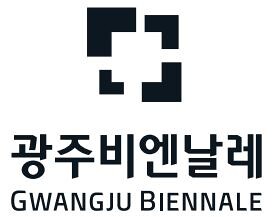September 7–November 11, 2018
Reflecting the 12th Gwangju Biennale’s theme of Imagined Borders, the Gwangju Biennale Foundation is proud to launch two new international programmes to facilitate exchange and look at the history of the Biennale from new perspectives; the GB Commission which will see four international artists create monumental site-specific new work; and the Pavilion Projects, which will welcome arts organisations from France, the Philippines and Finland to participate and explore the founding principles of the Biennale; democracy, human rights and peace.
The GB Commission: site-specific installations throughout Gwangju
The GB Commission seeks to explore the history of the city of Gwangju and the origin of the Gwangju Biennale, founded to sublimate the scars of the Gwangju Democratization Movement in 1980 into culture and arts. In the process, the Foundation hopes to deliver the Biennale’s ongoing values to audiences far beyond the city limits. Four participating artists, Adrián Villar Rojas, Mike Nelson, Kader Attia and Apichatpong Weerasethakul have been commissioned to develop new site specific works, exploring the historic sites throughout the city of Gwangju in which their work will be displayed.
Mike Nelson
Mike Nelson, who represented Britain at the Venice Biennale in 2011 and has twice been nominated for the Turner Prize, is known for his intricate large-scale installation works that reinterpret the physicality and the internality of spaces. For the GB Commission, Nelson has researched the former Armed Forces’ Gwangju Hospital, a site of great intensity during the May 18th Gwangju Democratization Movement. As an artist who closely investigates the materiality of structures, Nelson sheds new light on the site by using component parts of the hospital, weaving the sense of absence in the vacant buildings within which time and history are imbued with the tangible presence of the ruins that remain.
Adrián Villar Rojas
Argentinian artist Adrian Villar Rojas’ work interacts with the historical, socio-political, cultural and geographical layers of cities. Through his film presentation at the Asia Culture Center, Villar Rojas will address issues such as migration and the life in borderline areas such as the Demilitarized Zone between South and North Korea. Using Gwangju’s first modern cinema—built during the Japanese occupation (1910–45)—as the location for his new production, War of the Stars, Villar Rojas unfolds a layered narrative weaving together his previous films (such as The Most Beautiful Moment of War, made in the DMZ village of Yangji-ri) with scenes taken from cult classics such as 1922 Nosferatu or Star Wars. In doing so, he aims to combine new formal developments in two of his main lines of research: ontology and liminality in art and politics as power-based historical constructions.
Apichatpong Weerasethakul
Contemporary artist and Palme d’Or award winning independent filmmaker Apitchatpong Weerasthakul’s work explore themes concerning the modern Asian world’s scars from invasion by Western powers. For his presentation as part of the GB Commission, he will share his outlook on the world within the historic context of Gwangju. Weerasethakul will present a site-specific installation and performance at the former Armed Forces’ Gwangju Hospital.
Kader Attia
The influence of history, politics and social injustice on a society form the framework of Kader Attia’s new work. For the GB Commission, Attia will employ multidisciplinary approaches to explore traditional structures of healing and coping with political traumatic experiences. The manifold perspectives he gives a voice to in his work will present a variety of methods from different cultures used to deal with loss and injury, and by doing so, to question the complex notion of the border between physical and the immaterial between the real and the virtual, the concrete and mystical worlds.
The Pavilion Project | A Forum for International Exchange
The 12th Gwangju Biennale will, for the first time, host a series of Pavilion Projects beginning with three leading international art institutions to connect the Gwangju region to a wider arts community. The Gwangju Civic Center, Mugaksa Temple in Seo-gu and the Leekangha Art Museum in Yanglim-dong, Nam-gu, will host projects from the Palais de Tokyo, Helsinki International Artist Program (HIAP), and Philippine Contemporary Art Network (PCAN). The Pavilion Project will be a forum for exchange and promotion between countries to present emerging artists from their own countries alongside Korean artists.
Palais de Tokyo at the Gwangju Civic Center
Today Will Happen
Curated by President of the Palais de Tokyo, Jean de Loisy, and Head of Exhibitions at the Asian Cultural Center, Kim Seong Won, the exhibition Today Will Happen takes its title from Michel Houellebecq’s poem of the same name, published in The Art of Struggle in 1996. Houllelbecq’s poem, and the poet’s discussions about the poem will be translated into Korean and introduced as a song. These elements will become ingredients for a new visual art piece which will be shown at the exhibition.
HIAP at Mugaksa Temple
Fictional Frictions
Curated by HIAP’s Jenni Nurmenniemi, Fictional Frictions will present new commissions and recent artworks by South Korean and Finnish artists. The exhibition will consist of sculptural and sound installations touching upon aspects of the theme Imagined Borders. Five artists will highlight co-dependencies and continuums instead of ruptures, dissolving the dichotomies between past and present, individual and collective, micro and macrocosm in relation to the environment of the Mugaksa Temple.
PCAN at Leekangha Art Museum and new exhibition space, Hothouse
Hothouse
The PCAN will show six Korean and Filipino artists, curated by Patrick D. Flores, former curator of the Philippine Pavilion at the 2015 Venice Biennale. Inspired by the concept of a greenhouse—the liminal zone between natural and artificial that triggers rapid growth of plant life outside its natural season—artists will explore the correlation between horticulture and demonstrations; and the role of glass in urban city architecture.
For enquiries please contact:
Fiona Russell, Sutton
fiona [at] suttonpr.com / T +44 (0)2071833577
Bella Jung, Gwangju Biennale Foundation
bellajung [at] gwangjubiennale.org / T +82 (0)626084211

